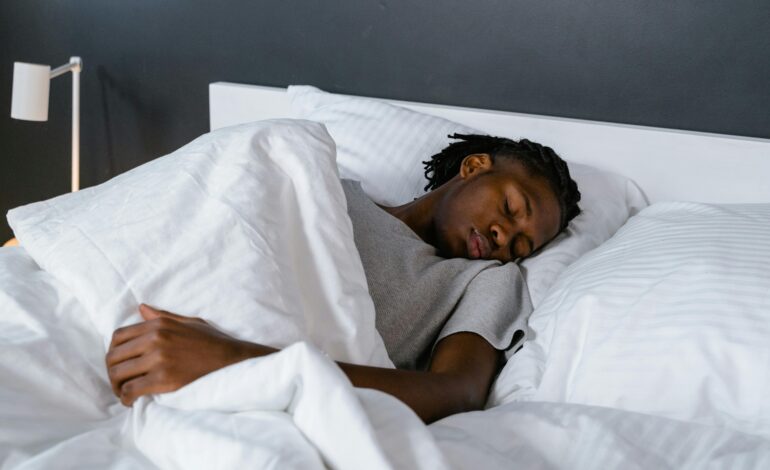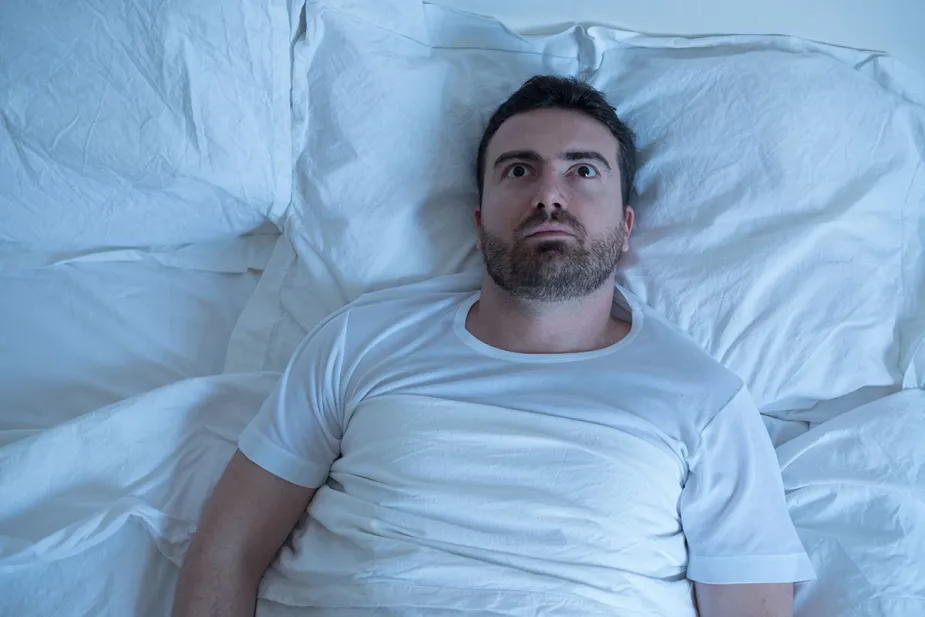Frozen in Fear: What You Need to Know About Sleep Paralysis
Imagine waking up in the middle of the night, eyes wide open, fully aware of your surroundings—but unable to move, speak, or scream. You might feel a crushing weight on

Imagine waking up in the middle of the night, eyes wide open, fully aware of your surroundings—but unable to move, speak, or scream. You might feel a crushing weight on your chest or the sense that something—or someone—is in the room with you.
This terrifying phenomenon is not a nightmare. It’s called sleep paralysis, and millions of people around the world experience it.
Though it can be frightening, sleep paralysis is a recognized medical condition—and understanding it is the first step toward managing it.
What Is Sleep Paralysis?
Sleep paralysis is a temporary inability to move or speak that occurs when a person is waking up or falling asleep. It typically lasts a few seconds to a few minutes and is often accompanied by intense fear, hallucinations, or a feeling of being suffocated.
This occurs during REM sleep (rapid eye movement), the stage where most dreaming happens. During REM sleep, the body naturally becomes “paralyzed” (a process called REM atonia) to prevent you from physically acting out dreams. In sleep paralysis, your brain wakes up before your body does—leaving you alert but frozen.
How Common Is It?

Sleep paralysis is more common than most people think, especially among certain populations.
According to a 2011 study published in Sleep Medicine Reviews:
- About 8% of the general population will experience sleep paralysis at some point in their lives.
- Among students and psychiatric patients, prevalence rates are as high as 28–32%.
- Higher risk is seen in people with anxiety, PTSD, insomnia, and narcolepsy.
Despite being relatively common, sleep paralysis is still underreported due to stigma, fear, or misinterpretation—many people don’t realize it has a scientific explanation.
Symptoms of Sleep Paralysis
Symptoms may vary, but common experiences include:
- Inability to move or speak, despite being conscious
- Sensation of pressure on the chest
- Difficulty breathing or a choking feeling
- Visual hallucinations (e.g., shadowy figures, intruders)
- Auditory hallucinations (e.g., footsteps, whispers)
- Out-of-body experiences or feeling of floating
- Extreme fear or dread
These episodes typically occur while falling asleep (hypnagogic) or while waking up (hypnopompic). Though frightening, they are not physically dangerous.
What Causes Sleep Paralysis?
The exact cause is not fully understood, but researchers believe it involves a disruption in the transition between sleep stages, particularly REM sleep.
Common triggers and risk factors include:
- Sleep deprivation or irregular sleep patterns
- Shift work or jet lag
- Stress, anxiety, or trauma
- Narcolepsy
- Substance use (especially stimulants or sedatives)
- Sleeping on your back (supine position)
- Mental health disorders, such as depression or bipolar disorder
Sleep paralysis is not caused by supernatural forces, demonic possession, or alien encounters—despite many cultures having folklore around such experiences.
Cultural Interpretations
Sleep paralysis has been part of global folklore for centuries, often tied to supernatural explanations:
- In Japan, it’s called kanashibari and thought to be caused by spirits.
- In Scandinavian countries, a “mare” or evil entity is said to sit on the chest.
- In Nigeria, it’s often attributed to witchcraft or demonic attacks.
- In the Southern U.S., it’s known as the “witch riding your back.”
While these stories reflect cultural interpretations, scientific understanding has demystified the experience, offering rational, biological explanations.
Diagnosis and When to Seek Help
Sleep paralysis is usually diagnosed based on clinical history. There’s no specific test, but doctors may perform:
- Sleep studies (polysomnography), if other sleep disorders like narcolepsy are suspected
- Sleep logs or diaries, to identify patterns and triggers
- Mental health screenings, since anxiety and trauma are common contributors
If sleep paralysis happens frequently, disrupts your sleep, or causes excessive anxiety, it’s time to talk to a doctor or sleep specialist.
How to Manage and Prevent Sleep Paralysis
Although there’s no guaranteed cure, lifestyle changes and management strategies can significantly reduce episodes:
Sleep Hygiene
- Aim for 7–9 hours of sleep per night
- Stick to a consistent sleep schedule, even on weekends
- Avoid screens, heavy meals, and stimulants before bed
- Make your sleep environment dark, quiet, and cool
Stress Reduction
- Practice mindfulness, meditation, or deep breathing exercises
- Consider therapy or counseling for unresolved trauma or anxiety
- Reduce caffeine and alcohol consumption
Position Adjustment
- Try sleeping on your side instead of your back, which is more likely to trigger episodes
Medical Treatment
- In frequent or severe cases, antidepressants (such as SSRIs or tricyclics) may be prescribed to suppress REM sleep
- Cognitive Behavioral Therapy (CBT) may also be effective, especially if anxiety is a root cause
Breaking the Stigma
The fear and confusion surrounding sleep paralysis can lead sufferers to feel isolated, ashamed, or even fearful of going to sleep.
But knowing that it’s a recognized neurological condition—not a supernatural event—is empowering. The more we talk about sleep paralysis, the more people realize they’re not alone—and the easier it becomes to seek help and manage it effectively.
Read About: 7 Hidden Ways Anger Is Destroying Your Health and Cutting Your Life Short
The wrap up
Sleep paralysis is unnerving but not dangerous. Understanding what’s happening in your brain and body during an episode can help reduce fear and build confidence in managing it.
If you’ve experienced this phenomenon, you’re not broken—and you’re certainly not alone. Talk to a doctor, make lifestyle changes, and most importantly, know that your experience is valid and real.
By Ravoke News Desk for Ravoke.com








